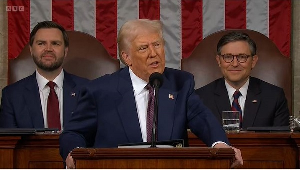Small and medium sized enterprises have begun stepping up their loan requests made to their commercial bankers following the Bank of Ghana’s announcement a fortnight ago that it will allow banks to use up to 2 percent out of their statutory 10 percent primary reserves specifically for lending to SMEs.
Several banks confirm that over the past week, loan requests from SMEs – including informal notice of impending formal loan applications – have increased significantly, with their owners pointing specifically to the BoG ‘s new initiative as the reason for their expectations of loan approvals from their bankers.
Following the most recent meeting of the BoG’s Monetary Policy Committee, during the last week in November, central bank Governor Dr Ernest Addison announced four key new initiatives ultimately aimed at lowering bank lending rates.
One of them is the decision to allow banks use up to 2 percent out of their respective primary reserves of 10 percent of their deposits, specifically for lending to SMEs.
This is to form part of the Enterprise Credit Scheme announced by Finance Minister Ken Ofori-Atta in government’s 2020 budget proposals in November.
As at August this year, total deposits held by the banking industry amounted to GH¢76.02 billion, meaning the industry’s primary reserves amounted to GH¢7.6 billion. Consequently, the banks will have GH¢1.52 billion available for lending to their SME customers, subject to their drawdowns meeting the eligibility criteria set by the BoG itself.
Effectively, this means banks willing to take full advantage of the new initiative could reduce their primary reserve ratio from 10 percent to 8 percent. Instructively banks have for long been complaining that the primary reserve ratio is too high, locking away 10 percent of the deposits in reserves that earn no interest, even as the banks have to pay interest to their depositors.
Currently, commercial banks in Ghana pay between the average of 2.80 percent per annum on current accounts (their cheapest form of deposits) and an average of 10.50 percent per annum on six month fixed deposits (their most expensive type of deposits).
Already the BoG is working out eligibility criteria with the commercial banks which will determine what lending can be financed out of what has up till now been regarded as untouchable reserves.
Primary reserves are maintained as a cash buffer against unexpectedly high withdrawals by depositors and ultimately can help a bank overcome liquidity challenges arising from deteriorating risk asset quality as well.
The decision by the BoG to allow the banks use one-fifth of those reserves for lending to SMEs reflects the central banks confidence in the liquidity positions – and improving asst quality – of the banks currently.
However, some bankers assert that although the opportunity to earn interest on part of their erstwhile reserves will be tempting, banks will be circumspect because of the relatively high credit risk associated with lending to SMEs.
Instructively, 73.7 percent of the banking sector’s non-performing loans portfolio – which is currently 17.8 percent of total loans outstanding – derives from credit given to indigenous enterprises, which are largely SMEs.
Indeed, the fact that prior to the recent major recapitalization exercise, many banks were regularly seeking BoG approval to exceed their single obligor limits to lend to large corporations, even as SMEs were having much smaller loan applications rejected, supports the assertion that the problem with SME lending is not so much lack of loanable funds but rather a reluctance on the part of banks to incur what they see as inordinately credit risks.
However, BoG chieftains remain confident that new initiatives to increase lending to SMEs could make as much as GHc2 billion in new credit available to them over the coming months.
Business News of Thursday, 12 December 2019
Source: goldstreetbusiness.com

















